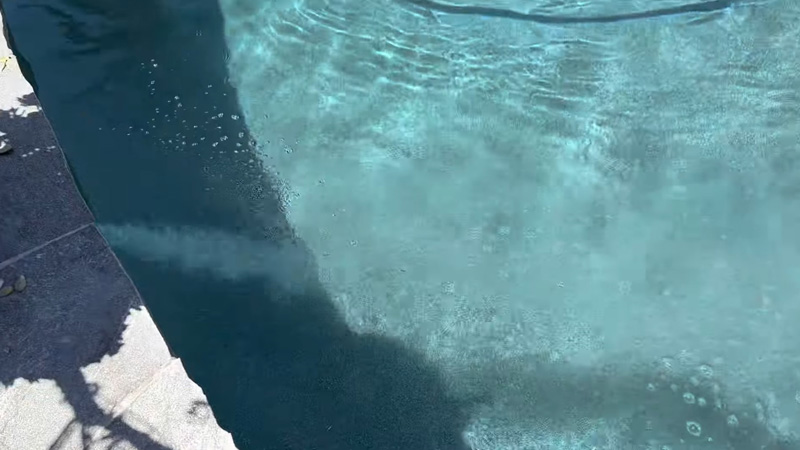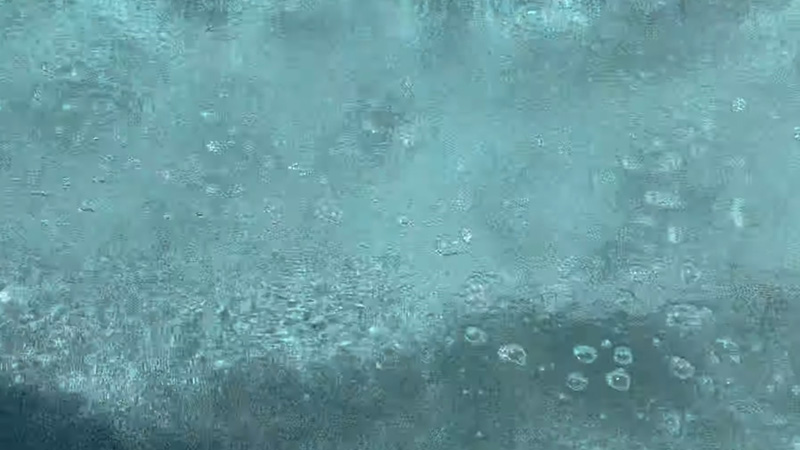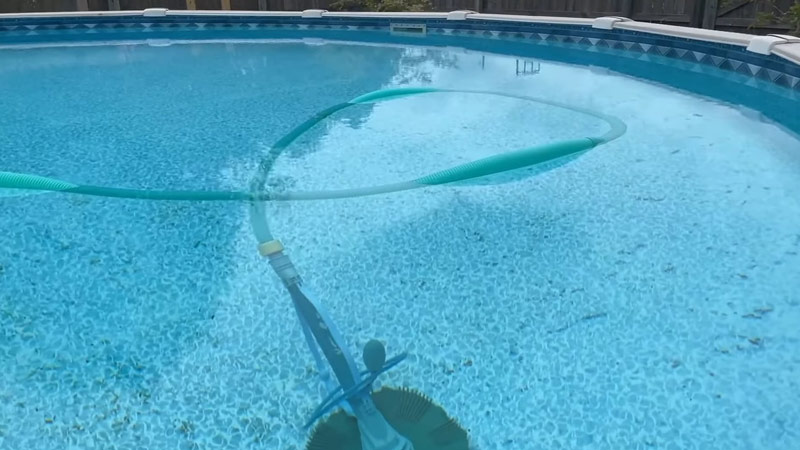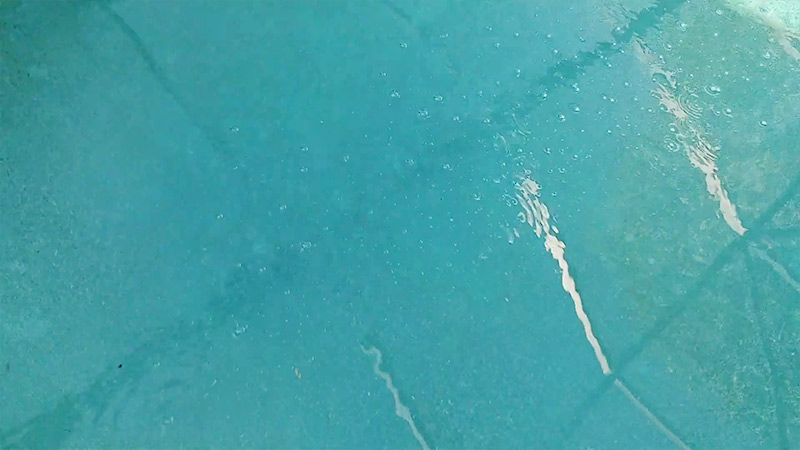A dip in a sparkling swimming pool is a quintessential summer pleasure. However, the serene surface can sometimes be disrupted by the enigmatic appearance of bubbles.
Understanding the causes of bubbles in a swimming pool is essential for pool owners and enthusiasts alike.
Whether they surface briefly and fade away or persist, these bubbles may indicate underlying issues that need attention.
In our comprehensive exploration of this topic, we will delve into the science behind the formation of bubbles in pool water.
We’ll uncover the diverse reasons behind their occurrence, from the innocent playfulness of swimmers to more complex factors like aeration, chemical imbalances, and equipment malfunctions.
By the end of this article, you will not only be well-versed in the nature and causes of pool water bubbles but also equipped with valuable insights on how to prevent and address them.
What Causes Bubbles in a Swimming Pool?
Bubbles in a swimming pool can have various causes, and understanding these causes can help you address and prevent them.
Here are some common reasons why bubbles may form in a swimming pool:
Aeration
Aeration occurs when air is introduced into the pool water. This can happen when swimmers splash or kick vigorously, causing the water to become frothy and produce bubbles.
Air Leaks
If there are air leaks in the pool plumbing or equipment, such as the pump or filter, air can be drawn into the system. This can create bubbles in the pool water as the air is pushed through the circulation system.
Chemical Imbalance
An improper balance of pool chemicals, especially with pH or alkalinity levels, can lead to the formation of bubbles. High pH levels, in particular, can cause the water to become foamy.
Algaecides or Clarifiers
Some pool treatments, such as algaecides or clarifiers, can produce bubbles when added to the water. While these products are designed to improve water quality, they can also create a temporary increase in bubbles.
High Water Pressure
If the pool’s water circulation system is operating with excessively high pressure, it can cause air to be drawn into the system, resulting in bubbles.
Water Features
Pools with water features like fountains, waterfalls, or jets can naturally produce bubbles as water is agitated and aerated in these areas.
Debris or Organic Matter
Debris, leaves, or organic matter in the pool can break down and produce gases, leading to the formation of bubbles. This is more likely to occur in stagnant or poorly maintained pools.
If you’re experiencing persistent or severe issues with bubbles in your pool, it may be advisable to consult with a professional pool technician who can diagnose and address the specific problem.
The Nature of Bubbles in Pool Water

Bubbles in pool water can have different characteristics and causes. The nature of these bubbles can vary, and understanding their characteristics can help you identify the underlying issues and take appropriate corrective measures.
Here are some common features of bubbles in pool water:
Size
Bubbles in pool water can vary in size. Some bubbles may be tiny and barely noticeable, while others can be larger and more prominent. The size of the bubbles can be an indicator of the underlying cause.
Location
Bubbles can appear at different locations within the pool. They might be concentrated near the surface, around water features like jets or fountains, or at the pool bottom.
The location of the bubbles can provide clues about their origin.
Persistence
Some bubbles may be short-lived and dissipate quickly, while others can be more persistent, lasting for an extended period. The persistence of bubbles can indicate whether the issue is ongoing or temporary.
Frequency
Bubbles may form sporadically, appearing and disappearing at irregular intervals, or they may be a constant presence. The frequency of bubble formation can help identify the cause.
Source
Bubbles in pool water can originate from various sources, including aeration, air leaks in the plumbing system, chemicals, or natural processes such as the breakdown of organic matter.
Appearance
The appearance of bubbles can range from small, clear, and inconspicuous to larger, frothy, or foamy bubbles. The visual characteristics can offer insights into the cause.
Proper pool maintenance and regular water testing are essential for preventing and addressing issues related to bubbles in pool water.
Causes of Bubbles on Top of Pool Water

Bubbles on the top of pool water are typically the result of aeration, which is the introduction of air into the pool. This aeration can occur due to various reasons:
- Splashing: Swimmers entering the pool can create turbulence and agitation, leading to the formation of bubbles on the surface.
- Water Features: Waterfalls, fountains, or jets in the pool can disturb the water’s surface and create bubbles as air mixes with the water.
- High Wind: Strong winds can cause surface ripples and bubbles as air is forced into the pool.
- Improper Water Chemistry: Unbalanced pool chemistry, especially with high pH levels, can lead to foamy water and bubbles.
- Chemical Additives: Some pool treatments, such as algaecides, clarifiers, or shock treatments, can temporarily produce bubbles when added to the water.
These bubbles are typically harmless and resolve naturally as the water calms down.
However, if you notice persistent or excessive bubbling, it’s essential to ensure your pool’s water chemistry is within the recommended range and that your pool equipment is functioning properly to prevent any air leaks that could contribute to excessive bubbling.
Effects of Bubbles on Pool Surface
Bubbles on the pool surface, while often harmless and temporary, can have several effects, both aesthetic and functional. Here are six points detailing the effects of bubbles on a pool surface:
Aesthetic Disruption
Bubbles create an uneven and frothy appearance on the pool surface, which can be unattractive and may interfere with the overall visual appeal of the pool. Excessive bubbling can give the pool a cloudy or turbulent look.
Reduced Clarity
Bubbles can scatter light, which diminishes water clarity. This can make it harder to see the bottom of the pool and may affect swimmers’ visibility and safety, particularly in deeper areas.
Water Temperature
Bubbles at the surface can influence the water’s temperature. By increasing the water’s surface area exposed to the air, bubbles may lead to greater heat loss, causing the pool water to cool more quickly, especially during colder weather.
Chemical Imbalance
Excessive bubbling may be an indicator of underlying issues, such as improper water chemistry. High pH levels, for example, can cause persistent bubbling and may affect the effectiveness of pool chemicals and sanitization.
Discomfort for Swimmers
Swimmers may find bubbles at the pool surface uncomfortable or annoying, especially if they are present in large numbers. This can impact the overall swimming experience.
Potential Maintenance Issues
While bubbles on the surface are usually harmless, persistent or excessive bubbling may be a symptom of underlying problems, such as air leaks in the pool’s plumbing system or equipment.
Addressing these issues may require maintenance and repairs.
In most cases, bubbles on the pool surface are temporary and resolve on their own, particularly when caused by aeration from splashing wind, or water features.
However, it’s crucial to monitor the pool’s water chemistry, equipment, and overall maintenance to ensure that persistent or excessive bubbling doesn’t indicate more significant problems that need attention.
Preventing and Treating Bubbles

Preventing and treating bubbles in your swimming pool involves a combination of proactive maintenance and targeted solutions. Here are six points to help you prevent and address bubbles in your pool:
Regular Water Testing and Chemical Balance
- Prevention: Test your pool water regularly for pH, alkalinity, and sanitizer levels. Maintain proper chemical balance by adjusting chemicals as needed. Balanced water is less likely to become frothy or develop bubbles.
- Treatment: If your water chemistry is imbalanced and has caused bubbles, adjust the chemical levels according to recommended parameters.
Maintain Pool Equipment
- Prevention: Ensure that your pool equipment, including pumps, filters, and plumbing, is well-maintained and free from air leaks. Regular maintenance can prevent air from entering the circulation system.
- Treatment: If you suspect air leaks or issues with your equipment, consult a pool technician to identify and fix the problem.
Minimize Aeration
- Prevention: Be mindful of activities that create aeration, such as vigorous splashing. Encourage swimmers to enter the pool gently.
- Treatment: If excessive aeration has caused bubbles, give the water time to settle and the bubbles will dissipate on their own.
Clean and Skim the Pool
- Prevention: Regularly clean the pool of debris and organic matter. Leaves and other contaminants can break down, releasing gases and causing bubbles.
- Treatment: Remove debris and maintain proper water clarity to prevent the formation of bubbles.
Adjust Water Features
- Prevention: If your pool has water features like fountains or jets, consider adjusting their operation to minimize aeration.
- Treatment: If bubbles are primarily originating from water features, modify their settings or reduce their operation temporarily.
Consult a Pool Professional
- Prevention: If you are uncertain about the cause of persistent bubbles or if preventive measures are not effective, seek advice from a pool professional during routine maintenance.
- Treatment: A professional can diagnose the issue, conduct repairs, and recommend appropriate treatments.
By following these preventive measures and taking appropriate actions to address the cause of bubbles in your pool, you can maintain clear and enjoyable swimming conditions.
Regular maintenance and attention to water quality are key to keeping your pool free from unwanted bubbles.
FAQs
Why are there bubbles in my pool?
Bubbles in your pool can be caused by various factors, including aeration, air leaks in the plumbing, or the use of pool equipment like pumps and jets, which can introduce air into the water.
What causes bubbles in the pool even when there is no soap?
Bubbles in a pool can occur without soap due to aeration, water turbulence, or air infiltration. High water flow or splashing can create bubbles, even in the absence of soap.
Why is my pool bubbling while summing?
Swimming can cause bubbling in a pool due to water movement and turbulence created by swimmers. This is a normal occurrence and usually not a cause for concern.
What would cause bubbles in my pool with no chemicals?
Bubbles in your pool without chemicals can result from aeration, air leaks, or environmental factors like wind. It’s not always linked to chemical use.
How to get rid of bubbles in the pool water?
To eliminate bubbles in pool water, ensure equipment is properly sealed, minimize splashing, and regularly inspect for air leaks. Adjust water chemistry, like pH and alkalinity, to prevent aeration-induced bubbles.
Wrapping Up
Bubbles in a swimming pool need not be a cause for alarm, but they do warrant attention and understanding.
Whether it’s the result of exuberant play, chemical imbalances, or equipment issues, knowing the underlying causes empowers pool owners to maintain the clarity and comfort of their aquatic oasis.
With proper maintenance, regular testing, and a vigilant eye, you can enjoy a bubble-free pool throughout the swimming season.
By addressing aeration, chemical balance, and equipment integrity, you’ll be well-prepared to keep your pool water pristine and inviting for countless more carefree dives and leisurely swims.
Remember, a little knowledge about the science of pool bubbles can go a long way in ensuring a crystal-clear and enjoyable swimming experience.







